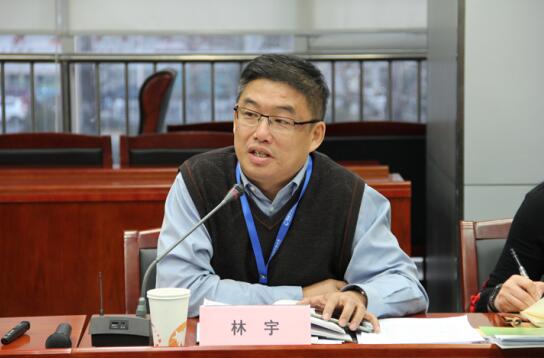 On 26 December 2018, the Open University of China (OUC) held a meeting on quality work in Beijing. The meeting aimed to exchange and summarise the work experience of quality management in the OUC, focus on the key links of quality assurance, and discuss the concept of quality work under the new situation. Lin Yu, vice president of the OUC, and the leaders and department heads responsible for quality and teaching in some branch schools participated in the meeting, which was chaired by Han Yi, director of the Quality Monitoring and Evaluation Centre.
On 26 December 2018, the Open University of China (OUC) held a meeting on quality work in Beijing. The meeting aimed to exchange and summarise the work experience of quality management in the OUC, focus on the key links of quality assurance, and discuss the concept of quality work under the new situation. Lin Yu, vice president of the OUC, and the leaders and department heads responsible for quality and teaching in some branch schools participated in the meeting, which was chaired by Han Yi, director of the Quality Monitoring and Evaluation Centre.

Han Yi gave a report on the current situation of quality management in the OUC from four aspects: the background of educational transformation, outstanding problems found in the inspection work, quality supervision and achievements, and reflections and discussions. Four OUC branches in Dalian, Fujian, Hunan, and Gansu exchanged and shared their experiences of quality management. Liu Xiping, vice president of the OUC Dalian Branch, expounded on how to consolidate the quality basis and promote essential development from three aspects: strengthening quality factors, building a teaching team, and implementing the teaching process. Li Zhengguang, director of Fujian Branch's Educational Administration Department, introduced the reform of the mixed teaching model that combining online and offline means and the methods emphasising quality monitoring of key points around the theme of actively promoting the mixed teaching model and improving the quality system. He also put forward suggestions for the improvement of the quality of the OUC. Miao Fumin, assistant president of the OUC’s Hunan Branch, introduced the design concept, assessment model, data collection, and release model of the dynamic quality assessment index system of the teaching process, and summarised the results. Wang Hongning, President of Gansu Branch, focused on work on quality factors. He discussed how Gansu Branch had designed the index system, comprehensively evaluated its various school-running units, analysed the changes, characteristics, and operation effects of the factor index system, and put forward suggestions for how to improve the quality factor work in the next step in a problem-oriented way, on the basis of the work of quality factors in the school.

The representatives discussed three topics at the meeting: how to better carry out the quality management work of the OUC under the current situation; how to improve quality factor data analysis and improve the quality of education and teaching; and how to effectively make changes and solve the problems found in teaching inspection. They also gave a number of suggestions for connotation construction and quality improvement. They agreed that the core issue of quality is the implementation of effective teaching processes and support services. The quality factor, which plays a leading role in enrolment, management, and teaching, is an essential part of quality assurance.
Lin Yu gave the concluding speech. He pointed out that, under the current situation, the significance of quality is more prominent than ever. Quality work is at the centre of all open education work and is a long-term task. From an overall point of view, quality work includes two aspects: teaching reform and implementation, and monitoring and evaluation. Lin Yu put forward three requirements for quality monitoring and evaluation: Firstly, we should follow the orientation of school running and personnel training, and the law of education and teaching and, on this basis, design and improve monitoring and evaluation standards, including hard standards and soft norms. Secondly, we need to design monitoring projects, sort out quality factors, and study the basic objectivity and accessibility of data. Monitoring and evaluation should be based on our own research instead of copying others' experiences, in order to ensure scientific evaluation. Thirdly, in order to carry out quality work, we should design a solid stratification and guarantee mechanism. The overall quality of the work of the system must be designed and implemented through everyone’s joint efforts. Furthermore, the Quality Assurance Committee should play a more important role as a quality assurance entity. Each level of the headquarters, departments, and schools should attach importance to the use of monitoring and evaluation results and devote efforts to solving corresponding problems.
By He Dandan, OUC